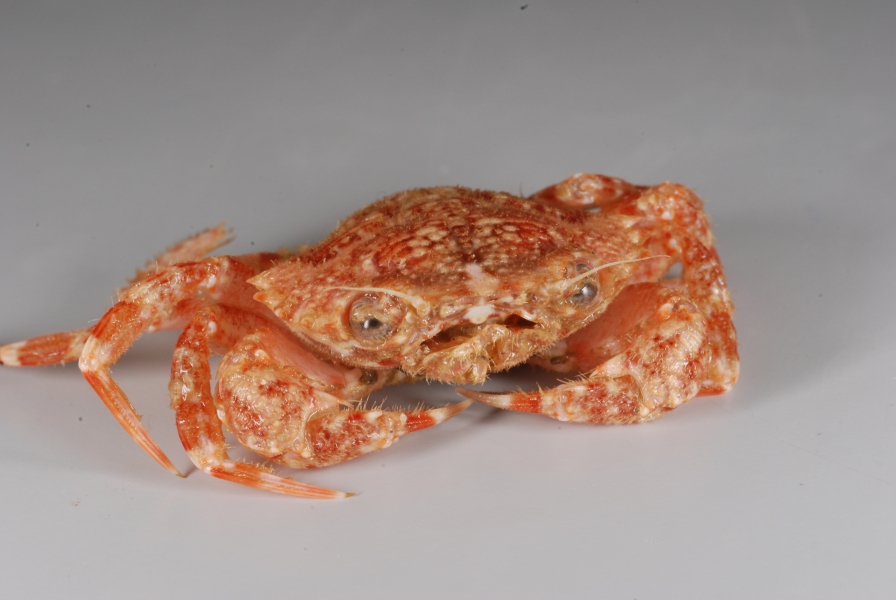We guess we would look grumpy too if our common name was ‘wrinkled swimming crab’, the species name, translating to ‘corrugated’ of course also eludes to the fact that the dorsal surface, or the back, of the carapace has a wrinkled appearance.
Swimming crabs – family Portunidae
This week’s critter belongs to the swimming crabs family, or portunids, which are easily recognised by their flatted last legs, shaped like paddles which are both used for swimming and as spades that help them burrow into the soft sediments of the seafloor. Together, with their streamlined flattened bodies, these paddles make them powerful swimmers that can move around the water at high speed. The rest of the time they hide half-buried in the soft sediments at the bottom where they can ambush their prey.
One of the marine invasive species in New Zealand waters is the Asian paddle crab Charybdis japonica, a pest that is now widespread in the Hauraki Gulf and in Northland. It is native to South East Asia and is expected to compete with our native crabs, such as Liocarcinus corrugatus for space and food and according to the NZ Ministry for Primary Industries it is a potential threat to marine farming as it preys on shellfish and other aquaculture species. It is also known for its aggressive temperament and can inflict a vicious bite if disturbed.
Liocarcinus corrugatus
This species was originally described from Plymouth, England, and has an almost world-wide distribution from northern Europe, the Mediterranean, western African and the Red Sea, Japan, Australia and New Zealand.
That their larval stages have been found in high abundances under drifting clumps of algae probably contributes to their wide distribution.
This species can usually be found on sandy and shelly bottoms, from the tidal flats and rock pools to about 140m depth.

